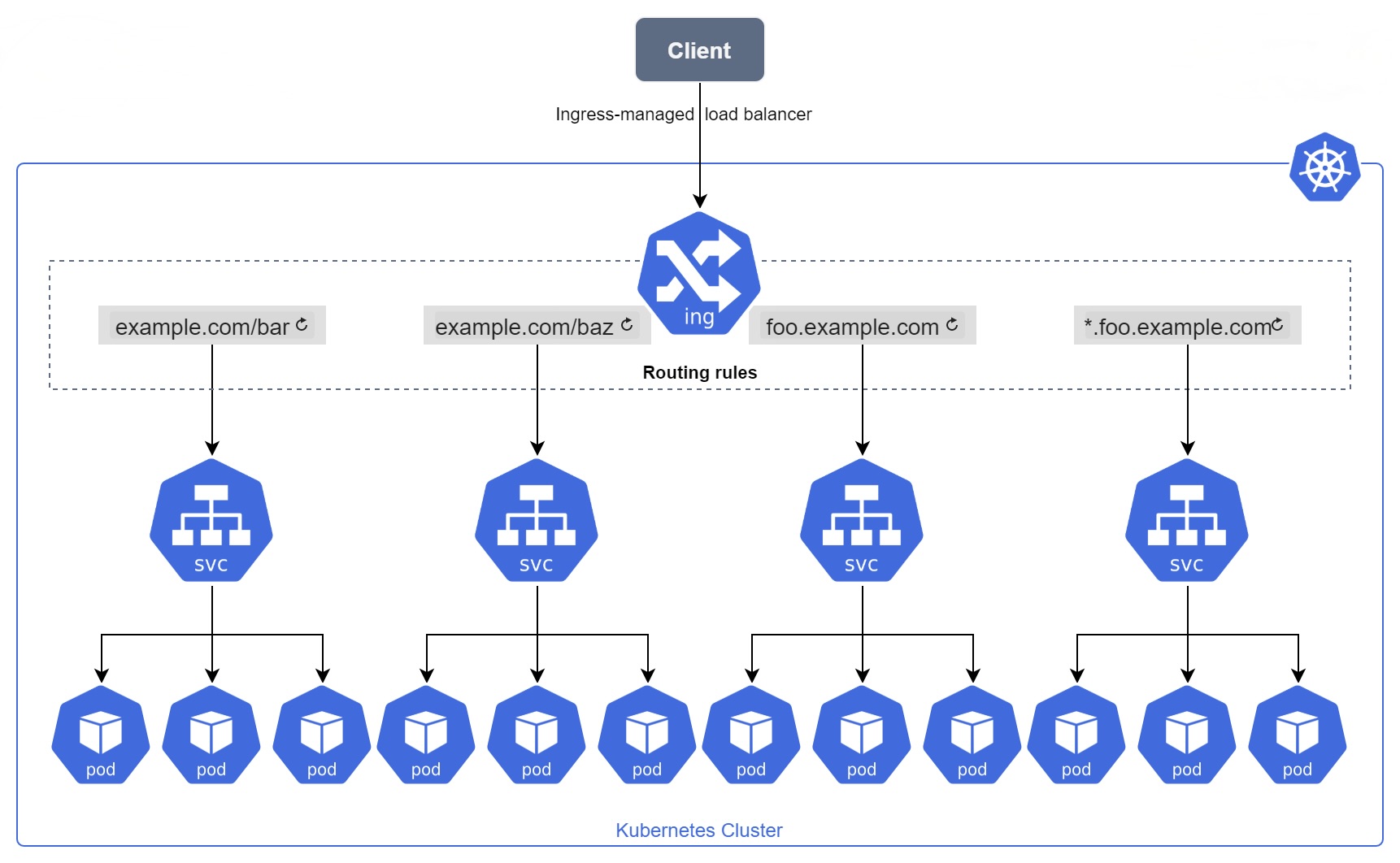Kubernetes - Ingress
Ingress
Kubernetes - Ingress
Introduction
Ingress is an API object that manages external access to the services in a cluster. It provides HTTP and HTTPS routing to services based on the request host or path.
Key features of Ingress
- Path-based routing:
- Ingress allows you to route traffic to services based on the HTTP URL path.
- This means you can route traffic to different services based on the requested URL.
- Host-based routing:
- You can also route traffic based on the host or domain name in the HTTP request header.
- Load balancing:
- Ingress can distribute network traffic to multiple pods to ensure no single pod is overwhelmed.
- SSL/TLS termination:
- Ingress allows you to terminate SSL/TLS encryption at the load balancer before traffic reaches the pods, offloading the encryption overhead from the pods.
- Rewriting and redirection:
- Ingress rules can rewrite and redirect HTTP requests, changing the URL path before forwarding the request to the service.
Ingress Controller
- To use Ingress, you need an Ingress controller.
- The Ingress controller is responsible for implementing the Ingress rules and managing the traffic routing.
- There are several third-party Ingress controllers available, such as NGINX, Traefik, and HAProxy.
Sample YAML
1
2
3
4
5
6
7
8
9
10
11
12
13
14
15
16
17
18
19
20
21
22
23
apiVersion: extensions/v1beta1
kind: Ingress
metadata:
name: my-ingress
spec:
backend:
serviceName: other
servicePort: 8080
rules:
- host: foo.mydomain.com
http:
paths:
- backend:
serviceName: foo
servicePort: 8080
- host: mydomain.com
http:
paths:
- path: /bar/*
backend:
serviceName: bar
servicePort: 8080
This post is licensed under CC BY 4.0 by the author.

